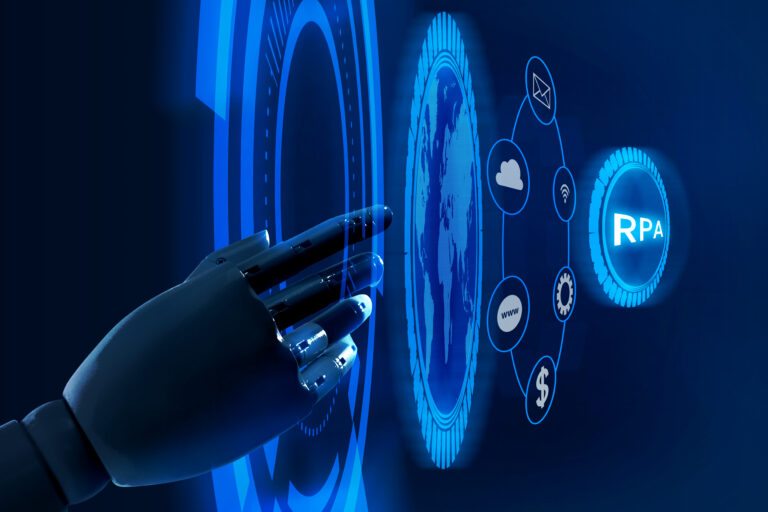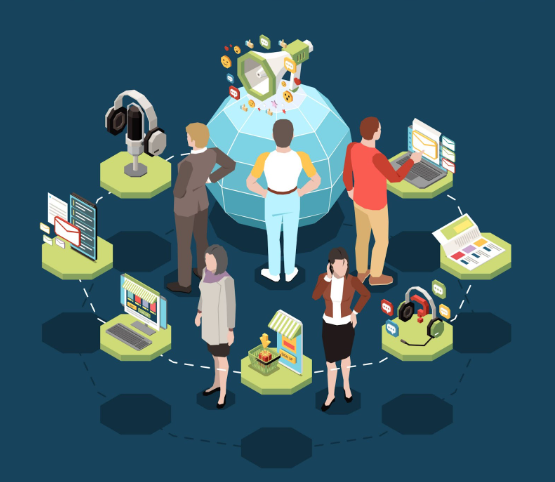The combination of applied intelligence and customer data platforms (CDP) represents a powerful synergy in the field of marketing. CDPs unify data from multiple sources to provide a complete view of each customer, solving the problem of information silos. By combining CDP with artificial intelligence (AI) and machine learning (ML), even greater benefits can be realized, such as the ability to predict behavior and deliver personalized experiences. However, it is important to consider data security and privacy, and this strategy requires continuous evolution to remain effective.
Author: Manuel Allegue
AI and collaboration: partners for the future for Industry 4.0
Industry 4.0 is based on the management of large volumes of information to optimize production in real time. The challenge lies in the efficient capture, organization and management of data, as well as collaboration with all actors in the supply chain. Collaboration and the use of technologies such as Artificial Intelligence are essential to promote digitalization and optimize decision making in Industry 4.0.
The wine industry toasts the advances of digital transformation
The wine industry has growth potential in the adoption of digital technologies. IoT sensors, artificial intelligence and blockchain are used to improve production, traceability and efficiency. Digitalization helps predict the weather, optimize harvesting, monitor soil quality, and streamline processes. The challenge is to include SMEs in this process to maintain the competitiveness and quality of the wine.
Is artificial intelligence really that smart? The dangers hidden in artificial intelligence
Artificial Intelligence (AI) presents biases that can be dangerous for society because machines learn from biased data. These biases can have significant social consequences, such as hiring discrimination and image mislabeling. However, AI is not inherently bad, rather proper data selection and corrective measures are required to address these biases. It is essential to have diverse teams in AI development and work towards responsible AI, applying explainability and meta-learning techniques.
Big Data and Insurance: towards an industry of risk prediction and prevention
The entire concept of insurance business is based on risk assessment. Whether it is property and casualty insurance or any other type of life, home or auto policy, the main task is to assume the possible risks relevant to each client and predict the possibility of the policyholder making a claim.
Digital transformation as the engine of the vineyard of the future
The wine industry is in an early stage of digital transformation, but with a high potential for technology adoption. Digitization throughout the wine value chain can improve efficiency, traceability and marketing. Artificial intelligence, the Internet of Things and blockchain technology are key tools in this process.
Big Data, Small Data: it all depends on how you look at it
Big Data refers to large volumes of complex data that cannot be processed by traditional software tools. It is characterized by the three Vs: Volume, Speed and Variety. Small Data is a part of Big Data, which refers to smaller and easily accessible data.
The term Big Data emerged in the 1980s with the massive growth of the Internet and the increase in data generated. However, the perception of whether it is manageable or not depends on the context and the human ability to process it.
Starting with Small Data can be an initial step to enter the world of Big Data, especially in commercial or production areas, as it provides gradual learning and training.
How Big Data is driving retail transformation
The use of Big Data in retail unlocks valuable information about customers and improves decision making. It allows you to understand purchasing patterns, optimize inventory and personalize customer interactions. Additionally, data analysis helps predict trends, adapt to market changes, and improve customer satisfaction, generating revenue and competitive advantages.
Hand in hand with IoT, golf is becoming more precise and competitive
The use of IoT and wearables in golf is revolutionizing the industry. Devices like smart golf clubs and sensors attached to the player's glove analyze and improve the swing, offering instant feedback and personalized training programs. In addition, real-time data tracking, such as the distance traveled by the ball, promotes competition and game improvement. Overall, IoT makes golf more accurate, professional, and engaging for all generations.
Definition of the problem: everyone's responsibility in data management
In a data science strategy, the precise definition of the problem is crucial. Asking the right questions allows us to gain insights, predictions, and insights that are useful for business in a big data environment. It is important to involve all the actors in the organization and use direct methods to raise the problem, integrating the vision of different areas. Collaboration between data scientists and business users is critical to the success of the project.











